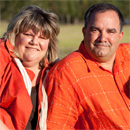How To Improve Your Health In 14 Days: Small Changes For Maximum Health & Weight Loss
Many Americans include health improvement in their New Year’s Resolutions. But real life intrudes, and we find ourselves facing the fact that our plans for reshaping our lives and health were a bit too much to manage in the face of the rest of our busy lives. However, small changes can be as effective as large ones – much less intimidating – and result in long-term improvements in your health.
Here are two week’s worth of small changes and activities that can improve your health. While these are written with people in an office in mind, they can be adapted to outdoor work or full-time parenting.
Day 1: Identify your Junk-Food-Hour. Put an index card in wallet or purse. Keep track of times at which you’re most likely to hit the candy machine or potato chip stash, that one thing that frustrates your good eating habits. For many of us, it’s mid-afternoon, though it may be at 1 a.m.! Track yourself for a week.
Day 2: Have a Green Day. Whether you buy lunch out or make it, see if you can include a green veggie each day. If you’ve got kids, they can have fun picking out new green food (nope, green gelatin doesn’t count!)
Day 3: Exercise Nibble. Take five minutes of your lunch break to walk. Walk two and a half minutes towards any place (up the street? up the stairs?) and then take the other two and a half minutes getting back. Got kids? Make it a small family ritual and start their good habits early!
Day 4: Sneaky Exercise. Sneak in exercise while you watch TV! Every time there’s a commercial, stand up and march in place until the commercial’s over. If you only watch public TV? Pick a word that characters or announcers are likely to say and march in place for two minutes.
Day 5: Start the Smoke-Out. If you smoke, pick up your phone, today, and make an appointment with your healthcare provider to set up a quitting plan. Alternatively, call the National Quitline at 1-800-784-8669, or check out the webpage put out by the Surgeon General (http://www.surgeongeneral.gov/tobacco/conspack.html) for the booklet “You can quit smoking” in both English and Spanish.
Day 6: De-stress the Drive. At each red light or stop sign, take a slow deep breath, counting to five as you inhale, count to five as you exhale. This simple habit makes sure you’ve really stopped at a “STOP” sign , and reducing your stress can keep you focused to prevent an accident.
Day 7: Junk Food Begone! Use your index-card record to figure out when you’re most vulnerable to a junk-food attack. Put some healthy alternatives (depending on your nutritional needs, this may be whole wheat crackers, dried fruit, nuts) in a bag at your desk or in your purse. Five minutes before your tough time, check to make sure that you’re hungry. If you’re just bored, take a short walk (even up the stairs, wash your face, or reapply lipstick). If you’re hungry and losing energy, make use of the stash of healthy food you’ve created.
Day 8: Check the Pressure. Stop at the drug store and use the automated blood pressure machine. High? Time to see your healthcare provider. Low? Check back each month.
Day 9: Life-Saving Self-Exam. For women of all ages: Pick a date and circle it on your calendar in pink. Repeat for the rest of the year. If you menstruate, make sure the dates are unlikely to coincide with PMS. Each “pink” day, do a self-breast exam. Don’t know how? Go to www.bigbam.org to download a “how-to” card.
Day 10: Medication Weed-Out. Set a timer for 30 minutes and tackle the bathroom cupboards. Medication that are expired? Vitamins that have been sitting there for years? Get rid of them. Make sure that you don’t flush these medications; your pharmacy or sanitation company can help you discard these items safely. If it takes more than 30 minutes, repeat on Day 11.
Day 12:. “Sleep hygiene.” Cleaning up your sleep habits to reduce interrupted or difficult sleep. Things that can help you sleep well: cutting down alcohol or caffeine before bed, not watching TV or looking at the computer for a half hour before bed (the bright light in your eyes can trigger wakefulness)
Day 13: Measure Me! If you’re engaged in weight loss, put a tape measure by the scale. Waist measurements are a good indicator that exercise and diet are improving your health (below 35 inches is associated with lower heart-disease risk).
Day 14: Housework Works. Pick one physical chore that you pay someone to do – mowing the lawn, raking the yard, vacuuming. Do it yourself, and stash the cash. Reward yourself with a healthy, stress-reducing, or “don’t I look great!” treat.
They seem like small steps, but small steps can add up to a marathon of good health!
Gaesser, G.A. Multiple Short-Bouts of Exercise: Fitness Alternative for Those Who “Don’t Have Time For Exercise.” (Continuing Professional Education article) SCAN’s Pulse (Sports, Cardiovascular, and Wellness Nutritionists),Volume 20, issue 3-4, 2001.
Proper, K.I. Effect of individual counseling on physical activity fitness and health: a randomized controlled trial in a workplace setting. Am J Prev Med – 01-APR-2003; 24(3): 218-26
USDA, 2005 Dietary Guidelines “Dietary Guidelines for Americans: Nutrition and your Health”

Ian Mason, owner of Shoppe.MD, your source for Online Prescription Medications and health news.
Ian studies health, weight loss, exercise, and several martial arts; maintaining several websites in an effort to help provide up-to-date and helpful information for other who share his interests in health of body and mind.
Contact Ian Mason by e-mail at [email protected]
-
Low Gi Weightloss Plan
-
The Atkins Diet
-
The Cost of Gastric Bypass Surgery
-
Sensible Diet Tips
-
A Stimulating Solution for Binge Eating and Weight Loss!
While the thought of “deep brain stimulation” may bring scary v
-
It’s Not Just About Dieting
- DON'T MISS
- Diet Program Review: Zone Diet
- Best Diet – 3 Key Features Your Diet Must Have For Weight Loss Success
- Vinegar and Weight Loss
- Monoglycerides and Diglycerides
- 10 Easy Tips to Eat Your Way to Lower Cholesterol This Month
- The Top 5 Christian Weight Loss Mistakes
- How To Lose 10 lbs. Or More Quickly And Safely
- Holidaze
- I Can, I Can’t
- Atkins Diet Results Are In & Some People Aren’t Going To Like Them




